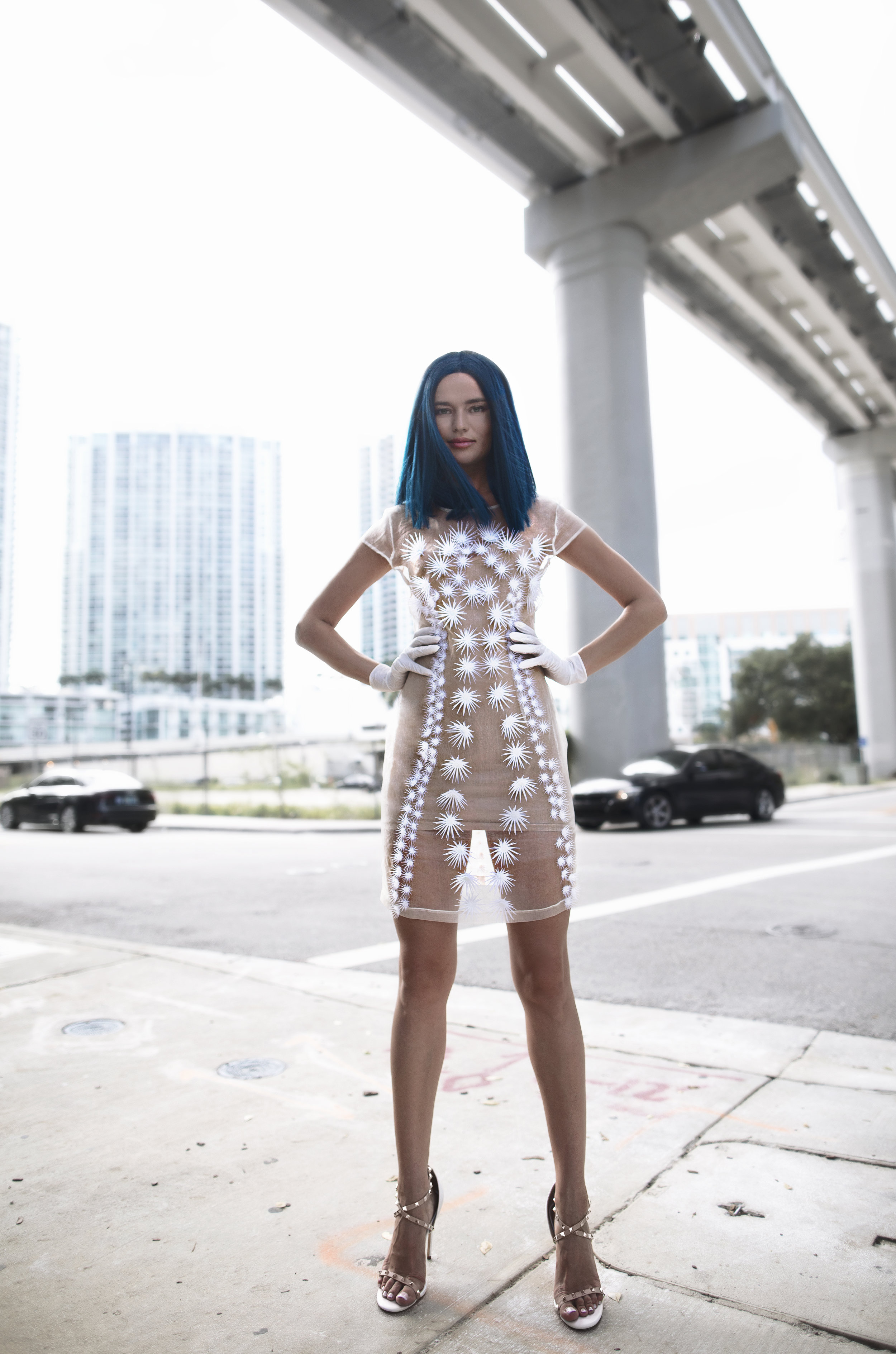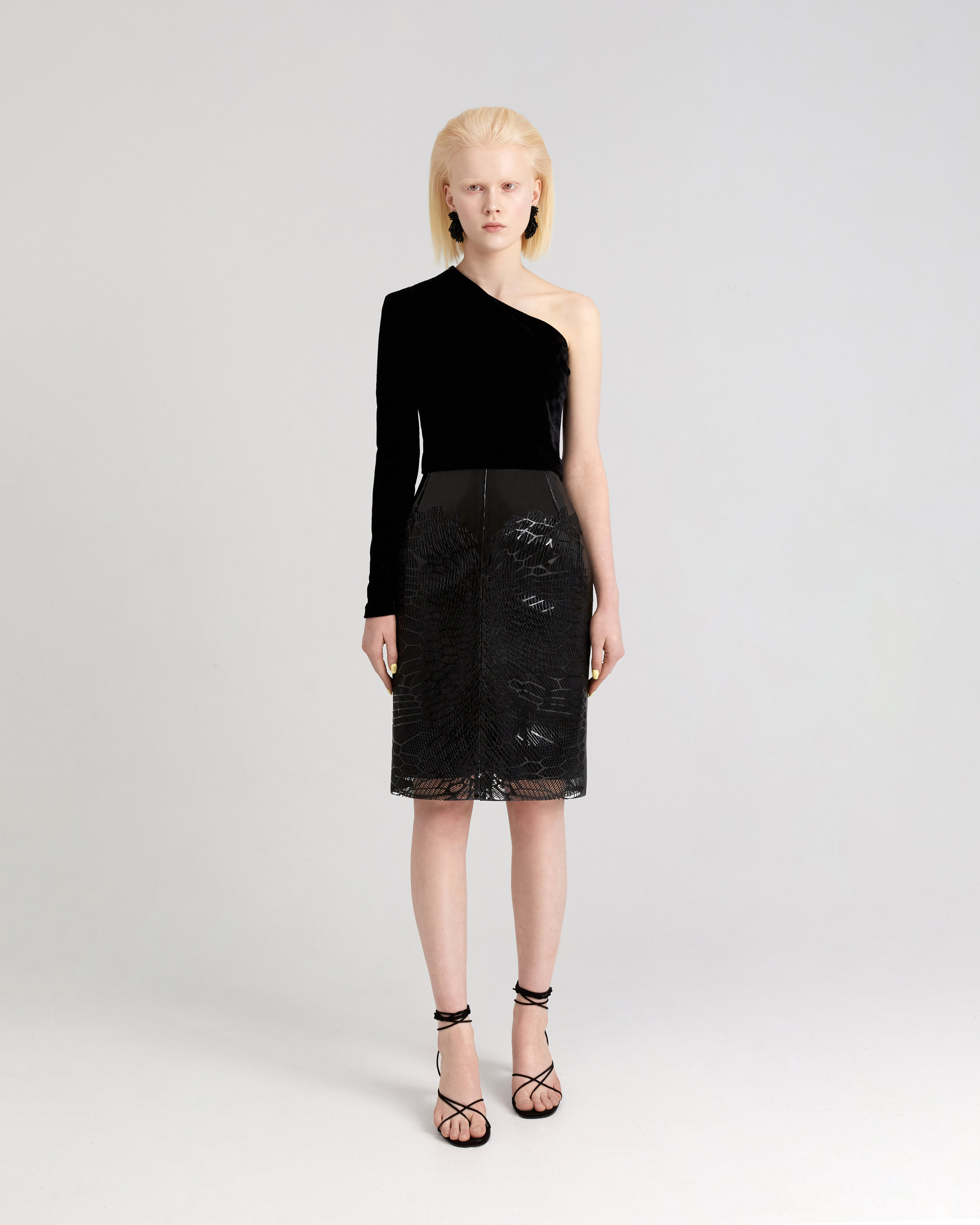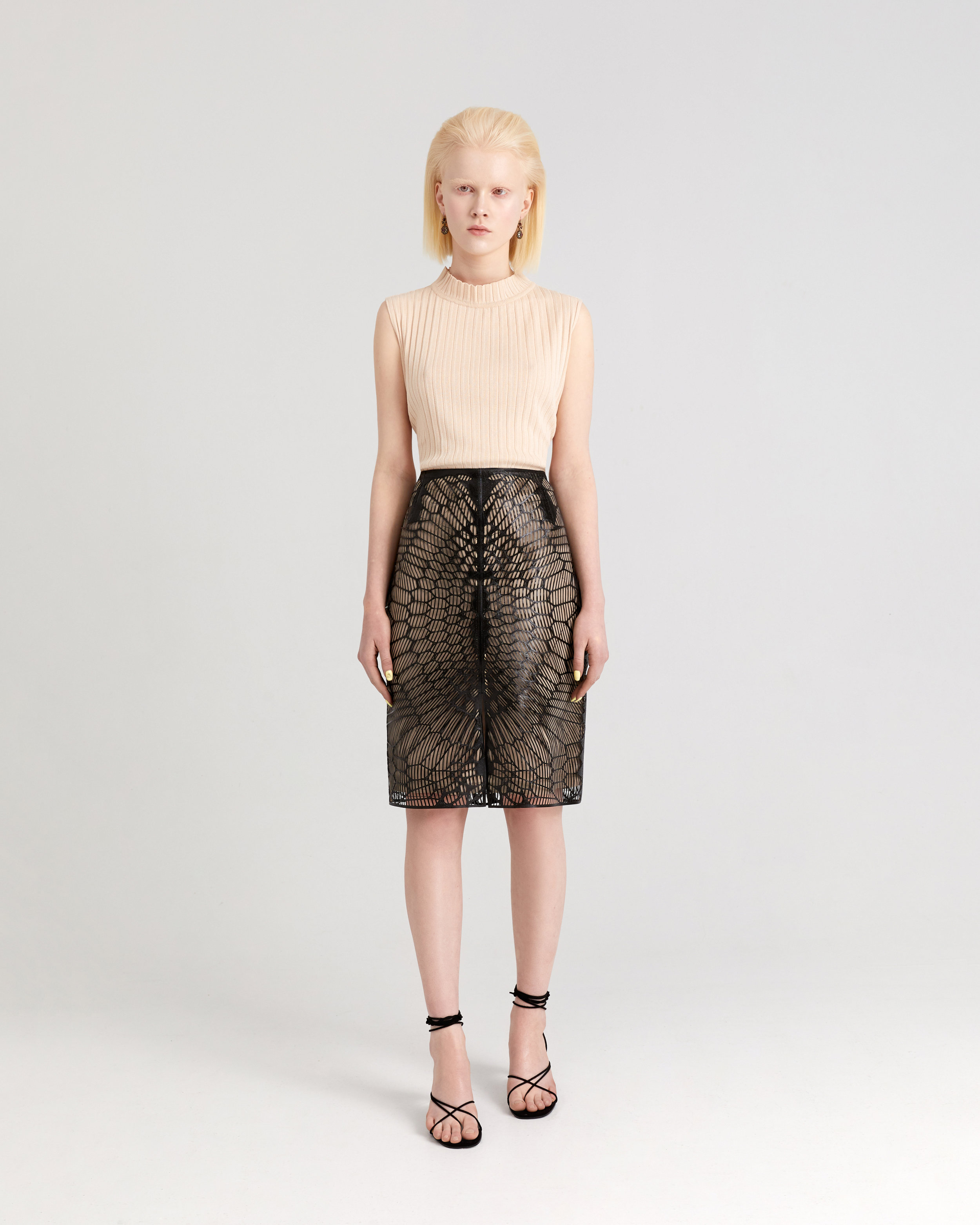WoW Woman in FashionTech | Julia Daviy, award-winning fashion designer and founder of The New Age Lab
Interview by Marija Butkovic
Julia Daviy is an award-winning revolutionary eco-friendly fashion designer and founder of The New Age Lab. She believes that strong, passionate women should never have to compromise on their inner beauty by choosing between fashion, sustainable production, and eco-friendly materials. Julia creates each garment digitally using technology of 3D printing by zero-waste method in large-format printers in the USA. Daviy’s New Age Lab is the first 3D-printed clothing manufacture model in the United States. Her first collection, The Liberation, was presented during NYFW 2018 and opened the door for wide-use of 3D printing in the clothing production. It consisted of 8 pieces of clothing created on FDM 3D printers and one dress, created on SLA 3D printers. Julia is the winner of the 2019 Eluxe Awards as Best Luxury Fashion Brand that uses zero-waste 3D printing to create gorgeous garments with materials that are recyclable and biodegradable. Technology Headlines included Julia in TOP 10 Fastest Growing Fashion and Apparel Solution Providers to Watch in The Year 2019. Her digitally customisable 3D-printed skirts made the must-have list of Vogue UK Spring-Summer 2019 Issue.
What is the idea behind your project/product, and how did you come up with it? What are your most significant achievements to date?
The idea of Julia Daviy’s New Age Lab project is the creation of new solutions, technologies, and processes to the problems of what to wear in the 21st century. I believe the new clothes need to fight with the negative effect on the environment of the old manufacturing techniques and processes on the one hand, and help humans to survive to face the most significant challenges and threats of the nearest decades on the other side.
We will probably have many challenges, such as an “impossible” wide range of temperature (survival in extreme cold and hot climate), and the impossibility of washing clothes or producing them in the traditional resource-intensive way.
We need many other functions for clothes to help us live in rapidly changing environments, on colonized Mars or feeling safe and comfy staying for a long time in the space shuttle.
The first stage of Julia Daviy’s Lab project is the utilization of 3D printing for clothing production. For the last year, we have launched the first collection of flexible and wearable clothes created entirely in large-format 3D-printers and developed a method for zero-waste clothes production with the adoption of 3D modeling and large-format 3D printing.
The US Patent and Trademark Office successfully accepted our patent application in this field last autumn.
Also, we wanted to offer our solution to overconsumption in the fashion industry. For the last few years, I have been obsessed with the idea of turning our society of consumers into a society of creators.
It led to the question “What if everyone would be able to design his or her ideal piece of clothing and get it 3D-printed and delivered in the shortest possible time?” We launched the first part of this design customization project on our website juliadaviy.com. Now you can design your skirt online and see all the changes in 3D, choose a style, color, pockets, and regulate a waistline. Once you've developed your skirt digitally, it will be 3D-printed and could be delivered to you in as soon as 10 days.
We reached almost zero-waste in the process of 3D printing of wearable clothes and found that our clothes may replace leather and leather-like garments even at this stage of 3D printing development.
Soon I became curious about the question, “Can we create fashion that will not just be zero-waste, but become beneficial for the planet, humans and other living beings?”
So I developed a concept of beneficial fashion with the help of 3D printing. These included clothes, bags, and shoes that are not just zero-waste, but they also can serve as a way to decrease the global carbon footprint and waste while cleaning and supporting the natural environment.
When did all start and do you have other members in your team?
Exploring new possible functions, looks, and shapes for clothes has been of interest to me since early childhood.
My investigation of fashion’s impact on life and habitats on Earth became the driving force to enter the industry.
As a person and a mom, I became obsessed with the idea to live an eco-friendly life, and I quickly discovered that my wardrobe was my biggest challenge in this journey.
I realized that organic fabrics were just a tiny step toward true sustainability. We instead need smart and organic processes.
Every new technology can be used differently, including causing new possible harm to the planet and living beings (similar to what we have done with the technology behind nuclear energy).
So I dove into the field of 3D printing and technology to use my diverse knowledge, education and experience and hopefully provide solutions that will help us to redesign the fashion industry.
What we need today is to rethink clothing and the ideas behind it such as “why we use clothes,” “why we will wear them in the future,” and “what clothes we need.”
“What kind of clothes we would wear if we were not limited by the experiences of the previous generation and by our education?” I often ask myself.
For now, I have four team members besides me. My partner in this project shares my passion for innovation; he is a space technology engineer and 3D printing hardware specialist. I’m fortunate to have him on this project since our every communication brings fresh ideas. Also, I’m glad to have team members who are professionals in the traditional clothing industry. Having seamstresses with vast experience of work with haute couture brands and a technologist from conventional manufacturing permits us to pay attention to the details.
How long did it take you to be where you are now?
It’s already the 4th year since I decided to dive into the sustainable fashion, fashion technologies, 3D printing, and 3D design of clothing. Until that time, I had spent more than a decade of developing projects and businesses in the clean technology industry.
What was the biggest obstacle?
As soon as you obtain multidisciplinary knowledge, you see that there is an almost full absence of truly sustainable materials both in the fashion industry and in 3D printing. Also, you may consider a lack of knowledge and understanding of new technologies in the clothing industry and society.
I stopped to live with the perception that everything must be easy a long time ago. I believe that it's OK when it's hard because it can't be easy when you are working on something completely new.
With 3D printing, I had to reinvent this feeling and realize that this process still has so many limitations, and one of them is that it's time-consuming. Once I accepted these limitations, I started to implement the solutions.
What are the challenges of being an entrepreneur in the niche you are in? How about being a female founder / entrepreneur?
The opportunity to combine science, technology, and hopefully, biology in the future, to question the status quo and to design new processes for the fashion industry is just exciting.
It's great that we have such kind of challenges and we can find a solution to almost all of them. That is just an indicator that we women live in a beautiful and promising age. We have already gotten a lot of freedom, and we still have time to fix the damage created by the traditional industry.
What are the projects you are currently working on?
Currently, we are working on projects of 4D printing of clothing and incorporation of wearables into the garment with the help of 3D printing.
Also, we will be happy to share our latest accessory line created with 3D printers with advanced sustainable materials later this autumn.
Is the #WomenInTech movement important to you, and if yes, why?
Absolutely! The world is becoming a more cozy place for women, thanks to you.
New technologies arise with new ethical dilemmas, misleading assumptions, misunderstanding, and even misuse of them. The industry needs the firm voices of women standing up for the use of technology for good.
What is the most important piece of advice you can give to all female founders and female entrepreneurs out there?
You can do anything using the technologies available today, develop your ideas fearlessly, and achieve new impossible heights.
The only thing that may impede the trajectory of your progress is the ethical and environmental impact you create.
We have the only green and living planet in the entire solar system. Perhaps we once had another one; Mars shows signs of a previous life, and now all it has an atmosphere full of carbon dioxide and frozen soil covered by ice. On the Earth, we have the unique natural ecosystems and living beings that need more and more of our protection to survive today. We cannot sacrifice them because it will mean sacrificing ourselves and humanity overall. Moreover, a huge part of every project's life and work mission must be the protection and development of the natural environment and biodiversity.
What will be the key trends in the wearable tech industry in the next 5 years, and where do you see it heading?
We will be able to 3D print flexible and wearable pieces of clothing and shoes as whole pieces without the need for assembly, and this will become a usual thing.
3D modeling, 3D design, and even digital 3D printable clothes will become an ordinary thing.
A wider range of new materials from recycled sources, and biologically and even biotechnological produced materials, will become a usual thing, too.
3D printing with full color and property range of materials and potentially with the opportunity for the designers to customize and create their materials for 3D printing will become common as well.
Who are your 3 inspirational women in wearable tech?
My top three is changing as I discover new inspirational women, stories, and projects.
For now, I love the works of the robotician Jamie Paik who created "robogamis": folding robots made out of super-thin materials that can reshape and transform themselves.
Work of glaciologist Kristin Poinar amazed me to show the other side how much we still have not known about the environment we live in.
I am inspired by the level of challenge of the scientist and astronomer Tabetha Boyajian who investigated celestial objects and potentially the civilization of aliens and new, unseen, natural processes in the galaxy.
Website: http://juliadaviy.com
Instagram: www.instagram.com/Julia3Daviy
Facebook: www.facebook.com/JuliaDaviyLab
YouTube: www.youtube.com/juliadaviy
Twitter: www.twitter.com/juliadaviy
LinkedIn: www.linkedin.com/in/julia-daviy/
This interview was conducted by Marija Butkovic, Digital Marketing and PR strategist, founder and CEO of Women of Wearables. She regularly writes and speaks on topics of wearable tech, fashion tech, IoT, entrepreneurship and diversity. Visit marijabutkovic.co.uk or follow Marija on Twitter @MarijaButkovic.







